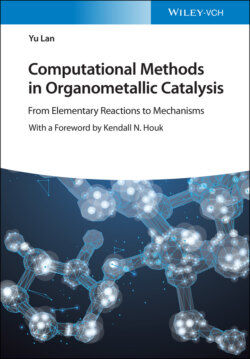Читать книгу Computational Methods in Organometallic Catalysis - Yu Lan - Страница 39
2.6 Revealing a Mechanism for An Organometallic Reaction by Theoretical Calculations
ОглавлениеIt has been more than 20 years since the computational tool became a powerful and popular way to reveal the mechanism for organic and organometallic reactions, which starts with the development of density functionals that gave excellent geometries and reasonable energetics for organic and organometallic compounds. Generally, the approach to the exploration of reaction mechanism and catalytic cycle involves the use of calculations to test hypotheses.
Collaboration with experimental chemists is helpful for the theoretical study of reaction mechanism. The proposed reaction mechanism can be assumed based on the known reaction conditions, phenomena obtained from experiments, and previous experience. Several possible mechanisms can be presumed, but each of them should be reasonable and not contradictory to the present experimental observations. In computational organometallic chemistry, the proposed reaction mechanism needs to involve all stationary points on the whole reaction pathway. It means each of the two local minimums should be connected by only one transition state. One can get the geometries of stationary points from geometry optimization of each structure usually by DFT calculations. The thermodynamic (Gibbs free energy and enthalpy) corrections also can be got from the same level of theory. Solvation effect is usually considered by the higher accuracy calculation with implicit solvent models. The total Gibbs free energy for each stationary points can be observed by
which is used to construct free‐energy profiles. The calculated free‐energy profiles for all of the possible reaction pathways are considered by energy criterion. The most energetically feasible pathway usually is considered to be the best reaction mechanism for a specific reaction. Herein, initial geometries are acquired by conformational searches with force fields. Input geometries of the transition structures are identified either from experience or through scanning along the reaction coordinate.
If results are in agreement with experiment, we analyze the transition states and the structural factors responsible for asymmetric induction are proposed. Qualitative models are developed to understand and to make new predictions for catalyst and reaction design.
